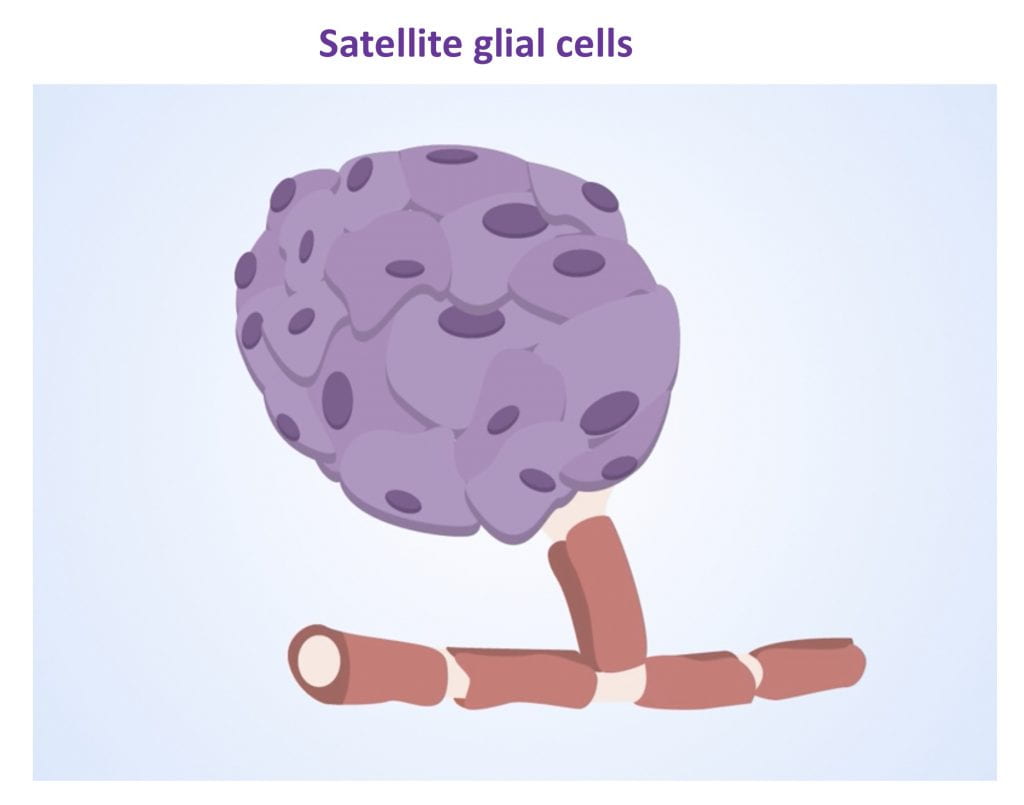Role of the DRG microenvironment surrounding neuronal soma in axon regeneration

Decades of research have focused on the signaling pathways elicited in sensory neurons as central intrinsic mechanisms regulating nerve repair. However, we know much less about the contribution of other cells residing in dorsal root ganglia to the nerve repair process. These cells include the glial cells that envelop the neuronal soma, known as satellite glial cells (SGCs), as well as macrophages, endothelial cells, and mesenchymal cells. We are using single-cell RNAseq of DRG in naïve and injured conditions in vivo to unravel if and how non-neuronal cells respond to injury and actively contribute to the axon regeneration process.
We found that each cell type responded differently to peripheral (sciatic nerve crush injury) and central axon injuries (dorsal root crush and spinal cord injury). We also found that all injuries increased the proportion of a cell type that shares features of both immune cells and glial cells, which we name Imoonglia. Our study provides a map of the distinct DRG microenvironment responses to peripheral and central injuries at the single-cell level and highlights that manipulating non-neuronal cells could lead to avenues to promote functional recovery after CNS injuries or disease.
We are now designing experiments to better define the contribution of other DRG resident cells, including macrophages and mesenchymal cells in axon regeneration.



Key publications:
- Avraham et al., Nat Comm, 2020
- Avraham et al., eLife, 2021
- Avraham et al., BioRxiv, 2021 >Full Article